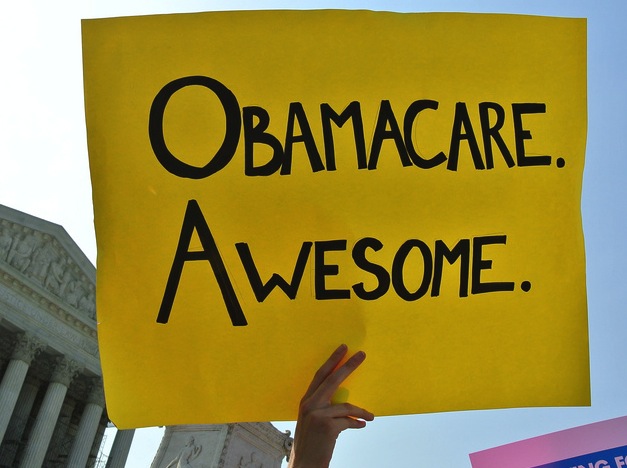
In July of last year I first began planning to buy insurance for my family under the federal Affordable Care Act. Since then, I’ve reviewed my options on the Covered California website, chosen my plan, paid the insurer, received my card, and have begun accessing healthcare. The process has had some hiccups, but so far the results have been much better than what I anticipated.
Back when I began shopping, I predicted that I would end up purchasing a “silver” Blue Shield PPO product to cover my family of three in Sacramento for $997 per month. The actual prices when they came out were much lower. So we bought a “gold” level product for $972 per month.
As people are beginning to learn, gold is much better than silver. Lower-income people receive subsidies from the federal government that make the silver plans more generous. But families like mine, which don’t receive subsidies, have to pay the $4,000 deductible before the silver plan begins to cover the costs of non-preventive care. The gold plan, on the other hand, has no deductible. Out-of-pocket costs such as copayments are also lower in the gold plan—a primary care visit has a $30 copayment instead of a $45 copayment.
Both the silver and gold options were more affordable than our previous insurance, which had cost us $1,137 per month. Our premiums had been higher because we had to buy two policies—an individual plan for my son and me and a COBRA policy for my wife, who had a not-too-serious but nevertheless pre-existing condition that prevented her from being able to buy an affordable individual policy. Now we have one insurer, one policy, and one network of doctors and hospitals for the entire family.
The issues with the federal website HealthCare.Gov have been well documented. Many states that chose to set up their own exchanges and websites have had much better results. Even here in California, though, I encountered a few small bumps in the process. The first day I tried to use my new insurer’s online system to pay our monthly premium by credit card, the site didn’t work. But it was fixed by the next day.
Also, my insurer automatically enrolled my son and me in the plan that most closely matched the old one that we had—but had been canceled—last year. Had we not preferred to switch to a Covered California plan, this would have made things more convenient. But in spite of how much I love writing about health insurance, I do not in fact love insurance so much that I want to have two policies. So I called the insurer, cleared the mix-up, and got a refund.
The move to a plan purchased under Covered California has had no impact on our family’s relationships with our doctors and hospitals, although I know people who are having some issues with finding providers. We had checked ahead of time and knew that our doctors were in the new PPO network.
We did notice that our new network had fewer doctors and hospitals, a winnowing of choices called narrow or tailored networks. These tailored networks have been targets for critics of Obamacare, but such networks constitute a feature, not a bug, of the reform. If every insurer has to provide access to every hospital in a certain town, there is no incentive for hospitals to lower their prices. If insurers offer only the highest value hospitals and doctors, though, it sets up competition among healthcare providers. Creating this kind of competition is the most effective way to control healthcare costs.
So my family is paying less for a single, more convenient policy in order to receive what I anticipate will be the same standard of care we were getting before the Affordable Care Act was implemented. But the fact that the new health law is working for us doesn’t mean it’s working perfectly for everyone. Issues of access to healthcare remain. More needs to be done to enroll formerly uninsured people, even in states like California, which has seen significant enrollment growth. And there’s a need to get a large number of younger, healthier folks to buy policies in order to keep premiums down in future years.
So we’re not out of the woods yet, but we can see the light through the branches.




Send A Letter To the Editors